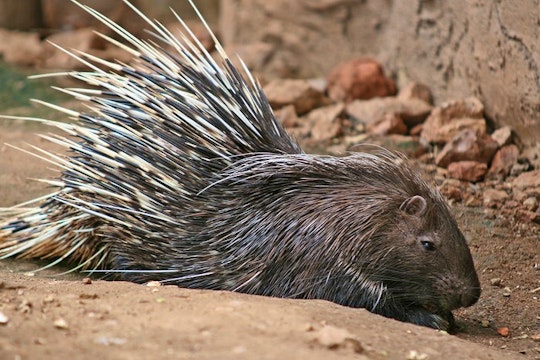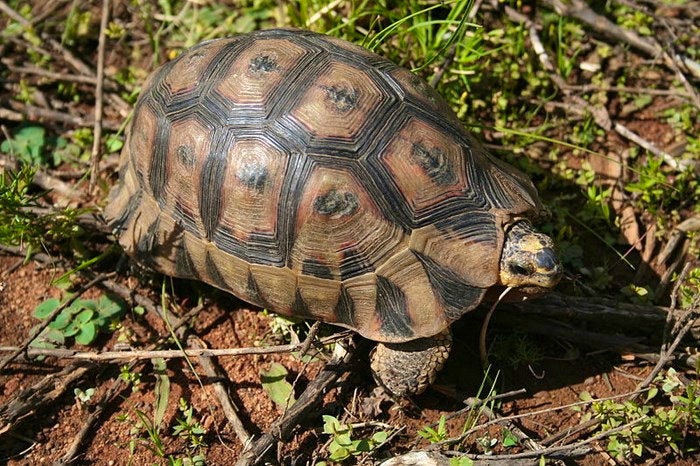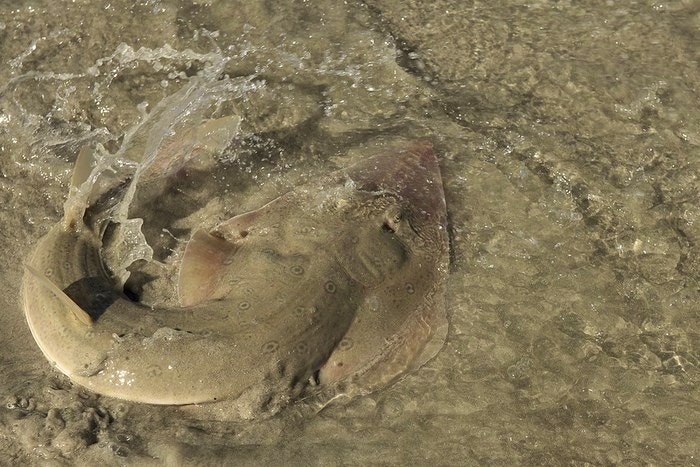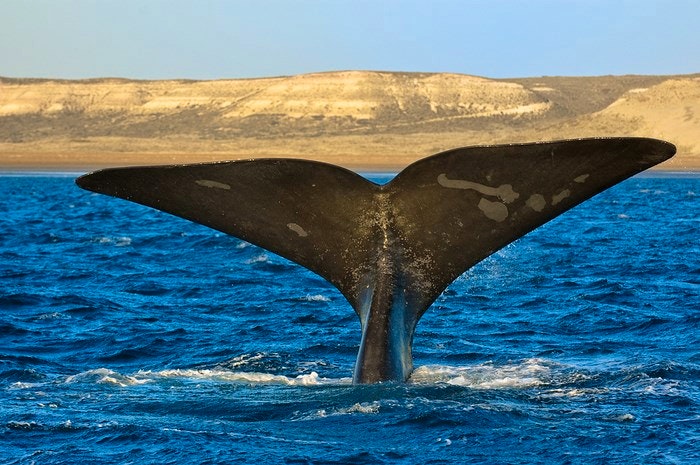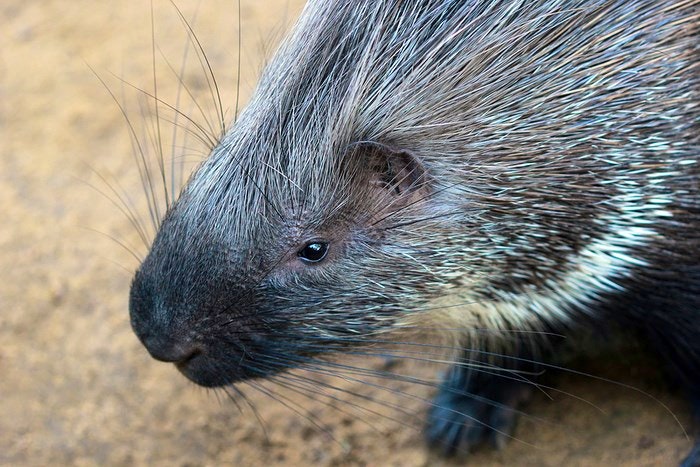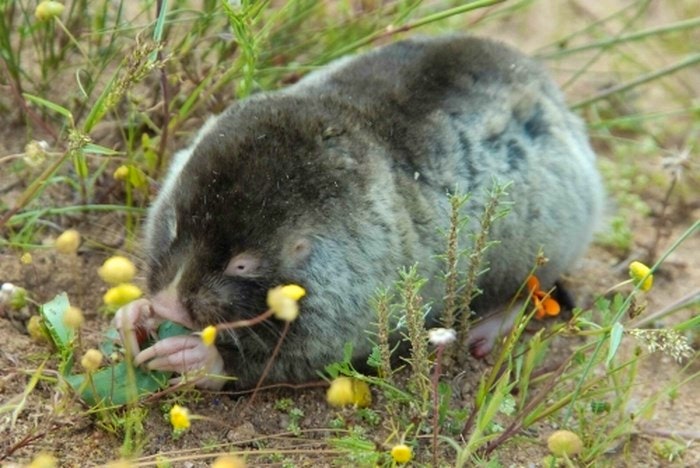Most will have heard all about the Big 5, some will likely know about the Small 5, but not many will be aware that South Africa is also home to the Slow Five, a term coined by the residents of Langebaan.
If you’re keen to meet the smaller and less agile counterparts of the Big 5, head to Langebaan and the West Coast Fossil Park to become acquainted with:
- Tortoises
The humble tortoise has been written about for as long as humankind has been around, from the Aesop fable of the tortoise and the hare, to the Nigerian story of how the tortoise got his crooked shell. In fact, throughout most histories around the world, the tortoise is associated with mystery, ancient knowledge, cunning, and longevity. Within the West Coast National Park, there are over 200 tortoises, with the rarest being the Angulate tortoises (Rooipens skilpad). This species is the only member of the Chersina genus. Catch them out and about in summer, along with the blooming wildflowers that the West Coast is known for.
- Sand Sharks
Found within the Langebaan Lagoon and nearby Shark Bay, the lazy, languid sand sharks population is far less feared than their more active cousins, such as the Great White sharks in False Bay or the abundant Tiger sharks found in KwaZulu-Natal. The sand sharks, also called Guitar Fish, have convex heads and at certain angels look a little like owls. They tend to migrate to the sand banks in the lagoon and bask on the sun-warmed sand for most of the day, with their beige, speckled skin blending in perfectly. You’ll often see fishermen catch and release a fair number of sand sharks during their time in the water, with most averaging between 2.7 – 4.5 kilograms.
- Whales
Gargantuan whales, despite their size, are known to be quite gentle, especially the southern right whales who visit the Langebaan shoreline annually from August to November. Within the West Coast National Park, along the Tsaarsbank view and picnic site, the whales can be seen frolicking and playing with their calves offshore, so bring your camera to capture the picture-perfect whale families.
- Porcupines
Prickly, cute, and also temperamental, the Hystrix africaeaustralis, more commonly called the Cape porcupine can be found wandering the dry veld of the West Coast National Park. They tend to vary in size from 63 – 81cm and are most often spotted in the early evening since they are nocturnal. If you spot one while out and about, do not approach it if it has no alternate escape route as it will, out of fear, charge whatever attacker it perceives and try to stab them with its quills. Birthing season for these monogamous mammals is between August and March, and females have litters of up to 3 young.
- Dune Mole Rats
Found below the ground far more often than above it, the dune mole rat (Bathyergu genus) is the largest subterranean mammal in Africa. This genus is endemic and is only known to survive within South Africa and Namibia. It is believed that the descendants originally came from the extinct Bathyergus Hendeyi, which roamed the earth just over 4 million years ago. These frisky mammals are found within soft, coastal sands and subtropical areas, surfacing only during the rainy season when the water table rises.
Which members of the Slow Five have you seen?

